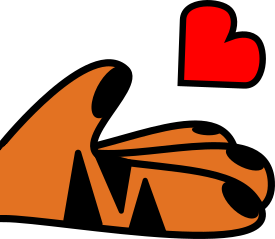A group of University students brought girl power to the John Witherspoon School yesterday — without the Spice Girls.
As part of a pilot program they call Girls Empowerment, a group of OWL members invited girls in grades six through eight to take part in an after-school workshop discussing body image and self-esteem issues.
Twelve girls participated in the hour-long workshop, which consisted of three stations. At each station, two OWL members presented a series of questions or discussion topics to a smaller group of four students.
OWL community service chair Megan Aghazadian '03 said she felt the middle school girls were more likely to respond to advice and information coming from college students than from their teachers and textbooks.
The topics the groups discussed ranged from television shows' depictions of women to the quality of a Stouffer's Lean Cuisine dinner. Though the group expects the array of topics to vary even more next year when the program runs on a monthly basis, they say they want the focus on empowerment of young girls to remain constant.
"We have an underlying theme of self-esteem," Emily Minkow '04, OWL's incoming vice president, said.
Self-esteem issues arise for some students just before high school. Just as their friends begin to date and diet, students often get mixed messages about how they should look and behave. At this age "kiddy stuff," as the young girls called it, gives way to more serious issues like sexual activity and eating disorders.
Girls Empowerment hopes to provide a forum for John Witherspoon girls, who may not have an opportunity to discuss these relationship and body image concerns at home.

Most of the girls said they preferred the advice of their friends to that of adults.
Minkow said the University students could provide girls at this pivotal stage with more reliable information than their peers.
Some girls at Witherspoon have already confronted issues such as anorexia and crash dieting. One seventh grader said she and her friends had gone on a group diet together and had needed medical help after losing too much weight.
Stacy Lau '03 and Mark Harlan '03, eating concerns peer educators on campus, addressed the problems associated with unhealthy weight loss at their station. Harlan detailed indicators that a friend may suffer from an eating disorder.

In their small group, Aghazadian and Minkow discussed how pictures in magazines portray an unrealistic standard of beauty for women.
Many of the students realized by the end of the day that what the media presents is not necessarily normal and healthy. Reacting to a rum ad featuring a slim and elegant woman, middle school student Chanise Randall said, "You know when you drink, you're not going to look that glamorous."
Sixth grader Crystal Glover was equally critical of models that did not mirror real women.
"They're ugly because they're trying to be something they're not," she said.
Both OWL and Witherspoon guidance counselor Evelyn Count said the program was a success.
"I think they got a lot out of talking to people older than they [are]," Count said. She invited OWL back to run a program of larger scale.
Though Aghazadian and Minkow said some modifications need to be made, they were satisfied with the results.
"They definitely got into it much more than I was hoping," Aghazadian said.
One student told the story of a friend whose mother often put her on diets because she was "too fat."
Though the girls were shy at first, they soon began voicing concerns about their friends and social lives.
"It was really surprising and upsetting to see someone so young thinking of their body like that," Minkow said afterwards.
"I think it's very different coming from us than coming from a health class," she said.
Seventh grader Annie Donnelly recognized some of the warning signs Mark mentioned in her friends. "I hear a lot of my friends saying 'I'm too fat; I need to go on a diet.' " Donnelly said that these friends were normal-sized and should not have been concerned with losing weight.
The girls squirmed uncomfortably when Harlan described how anorexia could kill an individual. "Your heart can simply stop. Your liver can stop working," he said.
After perusing several magazines, Aghazadian told the girls, "What we found is that all of the bodies are pretty much the same size, and they're all very skinny."
She later added, "In reality, only like 5% of people can be the size that models are."
Afterwards, Aghazadian and Minkow said they found it alarming that the images did not strike some of the girls as out of the ordinary.
"She looks pretty normal to me — I don't see anything wrong with her," eighth grader Heather Fedor said of a particularly gaunt woman in a magazine ad.
She said that learning how to identify the signs of an eating disorder and help a friend with a problem is one example of something that college students could teach younger women.
"I don't talk to my mom about anything," eighth grader Chantel McRae said.







